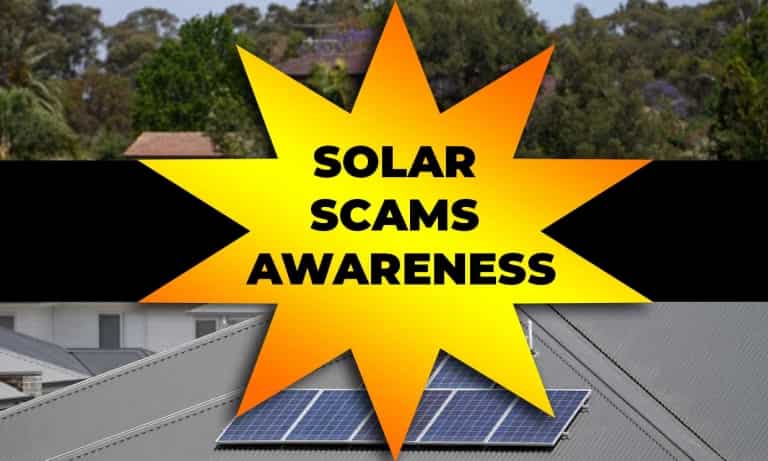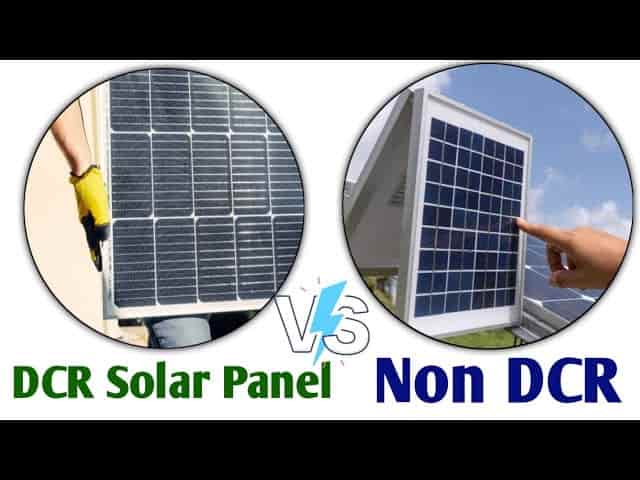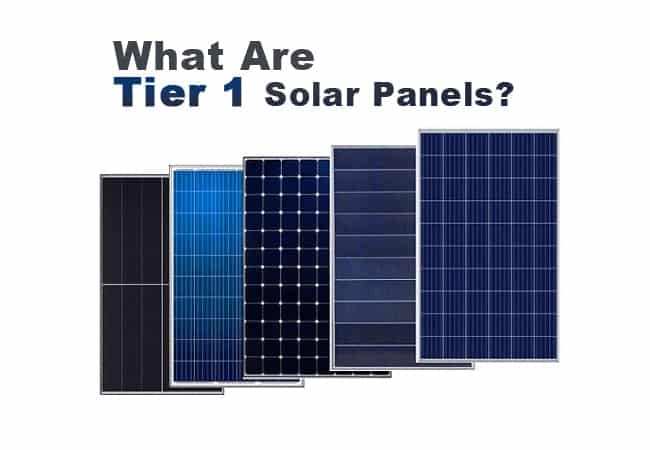
It’s not unusual for industrial customers to receive significantly different quotations for rooftop solar installations — even when the system size appears identical. For instance, one vendor may quote ₹32/Wp, while another offers ₹26/Wp for the same 500 kWp or 1 MWp plant. What causes this gap?
While multiple factors like inverter brand, mounting structure, and BOS (Balance of System) components, installation and after sales service influence pricing, one of the most often underestimated factors is the quality of solar panels. Panel quality has a direct impact on your plant’s energy generation, lifespan, degradation rate, maintenance needs, and ultimately, your return on investment (ROI).
There are 3 major classifications of solar panels — DCR or nDCR, ALMM and Tiered panels. After understanding this classification you can understand how they affect quality, pricing, applications, and long-term energy output. This blog clarifies the impact of all these and how you can choose the best panel based on your application and requirement.

🔍 1. DCR Panels (Domestic Content Requirement)
📌 Definition:
Both solar cells and modules are manufactured in India.
Mandated by MNRE for certain government-subsidized rooftop projects.
⚙️ Quality:
Reliable and traceable.
Made by established Indian manufacturers such as Tata Power Solar, Vikram Solar, and Adani Solar.
Must also be ALMM-listed to be used in net-metered systems.
💰 Price:
Panel priced at ₹22–₹25/Wp ( higher priced due to local manufacturing and compliance ) and the solar plant cost varies from Rs. 55/- to 65/- /Wp + Taxes, depending on the size of the solar plant, the length of the wire used etc.
🧱 Use Case:
Under SuryaGhar Yojna schemes for small residential rooftop systems (1–10 kW) / Group Housing Societies/Residential Welfare Association under MNRE to avail Government subsidy.
- PM KUSUM Scheme, for farmers for solar pumps for agricultural purpose to avail Government subsidy
- For Central Public Sector Undertaking for solarization of their building.
Projects Funded By: Central Government budget or MNRE grants, such as Ministries, railways, defense, PSUs etc.
It is typically not used by private firms for commercial applications and Industries due to the high costs of the panels.
🏠 Example:
- A 5 kW residential rooftop system availing MNRE subsidy must use DCR + ALMM modules to qualify. Brands like Tata Power Solar are commonly used.
A farmer installing a 10 kW solar pump under the KUSUM-Yojana must use DCR panels from an ALMM-listed Indian manufacturer.
⚙️ 2. nDCR (Non-Domestic Content) Panels :
📌 Definition:
Panels using imported solar cells (mostly from China, Vietnam, Malaysia), though the module assembly might be in India or abroad.
⚙️ Quality:
- Can be both high quality or low quality.
High-quality if sourced from Tier I manufacturers
- Low Quality if sourced from Tier II or Tier III manufacturers/Vendors
💰 Price:
₹12–₹20/Wp (depending on brand and ALMM listing) and the solar plant cost varies from Rs. 28/wp to Rs. 50/wp (Depending on size of solar plant, wire length, inverter, MMS etc.)
🧱 Use Case:
Most suitable for commercial and industrial rooftop installations.
🏭 Example:
A 450 kWp rooftop plant in a Rice Mill uses nDCR + ALMM-listed/Non ALMM listed modules.
✅ Best choice for industries seeking performance and ROI without dependency on subsidy.

📝 3. ALMM (Approved List of Models & Manufacturers) Panels
📌 Definition:
A mandatory list published by MNRE for all grid-connected solar projects.
- Objective: Ensure traceability, quality, and standardization as per BIS/IEC standards in solar panels used in India.
- The panels can be DCR or nDCR.
⚙️ Quality:
ALMM listing ensures certification, factory audit, and performance standards.
💰 Price:
ALMM compliance typically adds ₹1–₹3/Wp over non-ALMM counterparts.
🧱 Use Case:
Compulsory for:
Rooftop systems connected to the grid whether residential or commercial (usually for availing net metering benefits).
Government buildings and subsidy based projects referred above where DCR panels are used
🏢 Example:
A 300 kWp rooftop plant on a commercial mall in Jharkhand uses Tata Solar (nDCR + ALMM) panels to ensure grid approval for availing net metering benefits from the DISCOM.

📊 4. Tiered Panels – Tier I, II, III
⚠️ This is often the least known and least prioritized factor by users, yet it profoundly impacts long-term performance, warranty reliability, and return on investment. Ignoring the panel’s tier can lead to hidden costs over time.
The Tier classification, especially as referenced in the solar industry, is primarily based on a methodology developed by Bloomberg New Energy Finance (BNEF). This classification does not directly rate panel quality, but evaluates the bankability and reliability of the manufacturer.
Why Understanding the Tier of a Solar Panel Is Essential?
The solar panel market is flooded with brands that may look similar on paper—but not all are equal. This is where Tier classification helps buyers and developers make informed decisions.
🏷️ What Is “Tier” in Solar Panels?
The most commonly referred classification is by BloombergNEF (BNEF), which ranks manufacturers into:
Tier 1
Tier 2
Tier 3
🔍 Note: This does NOT rate panel quality directly, but rather the financial strength, bankability, and manufacturing reliability of the panel manufacturer
📊 Tier-wise Comparison of Solar Panel Manufacturers
| Feature / Parameter | 🥇 Tier 1 | ⚙️ Tier 2 | ⚠️ Tier 3 |
|---|---|---|---|
| Definition | Bankable, large-scale manufacturers with a global presence | Mid-scale manufacturers with limited bankability | Small, often local assemblers with limited credibility |
| Financial Strength | Strong, audited, globally recognized | Moderate, regionally known | Weak or unknown |
| Bankability | Projects financed by top banks using their panels | Rarely used in bank-financed projects | Not accepted by banks for financed projects |
| Vertical Integration | Fully integrated (cells + modules + R&D) | Partial (may outsource some stages) | Mostly assemble with third-party components |
| Manufacturing Scale | >1 GW/year, highly automated | 100–500 MW/year, semi-automated | <100 MW/year, manual processes |
| Technology Adoption | Advanced (PERC, TOPCon, Bifacial, N-Type) | Standard PERC or polycrystalline | Often outdated tech or mixed sourcing |
| After-Sales Support | Strong, well-established service network | Moderate, mostly through distributors | Poor or inconsistent |
| Warranty Enforceability | High confidence in 25-year warranties | Varies by brand | Low reliability |
| Price Range (India) | ₹22–₹25/Wp | ₹18–₹22/Wp | ₹12–₹18/Wp |
| Common Applications | Utility-scale, government, commercial/industrial | Budget commercial/industrial | Small off-grid, rural, or cost-sensitive projects |
🔧 Recommended Panel Types for C&I (Commercial & Industrial) Customers
For C&I (Commercial & Industrial) customers, selecting the right solar panel type is crucial to balance performance, cost-efficiency, and long-term reliability.
Broadly, three major combinations are relevant:
- nDCR + ALMM panels which comply with government norms and are suitable for grid connectivity or policy-compliant projects;
- nDCR + Non-ALMM (Tier I) panels from globally reputed brands offering high efficiency and strong warranties—ideal for private industrial setups focusing on long-term ROI;
- nDCR + Non-ALMM (Tier II/III) panels that are typically used in low-cost EPC-driven projects but carry higher performance and warranty risks.
The below table gives a detailed technical and financial comparison to help C&I customers make an informed choice.
📊 Industrial Application Comparison: (nDCR + ALMM) vs (nDCR + Non-ALMM)
| Aspect | nDCR + ALMM | nDCR + Non-ALMM (Tier II/III) | nDCR + Non-ALMM (Tier I) |
|---|---|---|---|
| Grid Connectivity | ✅ Yes | ❌ No | ❌ No |
| Brand Tier | Both Tier I and Tier II | Lower-tier Chinese/SE Asian brands | Tier I global brands (e.g., Trina, LONGi) |
| Efficiency | 20%–21.5% | 19%–21% | 21.5%–22.5% |
| Module Quality | Good (certified under ALMM) | Variable, often inconsistent | Excellent (advanced cell tech) |
| Degradation Rate (Yearly) | ~0.5–0.7% | Often >0.7% | ~0.45–0.55% |
| Warranty Support | Moderate (Indian support) | Weak or non-existent after-sales | Strong, global-backed RMA |
| Cost per Watt (₹) | ₹22–₹25/Wp | ₹12–₹18/Wp | ₹20–₹22/Wp |
| Bankability / Financing | High (ALMM registered) | Very low (usually not bankable) | High (Tier I brands accepted) |
| Project Risk | Low | High | Low |
| Usage Scenario | Grid Dependent Projects | Not recommended | Private/Industrial Focused |
Recommended Panels for Industries:
- For industrial and commercial projects without Net Metering– nDCR + Non-ALMM (Tier I) panels are recommended due to their high efficiency, better performance warranties, and strong global brand support for better ROI.
- For Industrial and Commercial Projects with Net Metering or Grid connected solar plants- nDCR + ALMM panels are necessary as they meet MNRE compliance requirements and ensure eligibility for government benefits.
- For space-constrained C&I rooftops needing maximum output per sq. meter – Tier I Non-ALMM panels are ideal for delivering higher generation within limited area, even if not ALMM-listed.
🔍 How Cheap Vendors Cut Costs – And the Real Impact
Cheap vendors often reduce project costs by compromising on critical quality parameters that are not immediately visible but severely impact long-term plant performance and ROI. Their main tactics include using lower-tier panels, cutting corners in installation quality, and offering weak or no after-sales support.
🧪 Case Example: 100 kWp Solar Plant Comparison
| Parameter | Non-ALMM + nDCR + Tier I | ALMM + nDCR (Tier I) | Non-ALMM + nDCR (Tier II/III) |
|---|---|---|---|
| Panel Efficiency | 22.50% | 21.50% | 19.50% |
| Cost per Wp | ₹28/Wp | ₹30/Wp | ₹26/Wp |
| Total Cost (100 kWp) | ₹28,00,000 | ₹30,00,000 | ₹26,00,000 |
| Annual Generation (kWh) | ~1,52,000 | ~1,45,000 | ~1,30,000 |
| Generation Difference/Year | — | 7,000 units less | 22,000 units less |
| Revenue @ ₹6/unit (1st year) | ₹9,12,000 | ₹8,70,000 | ₹7,80,000 |
| Degradation Over 10 Years | ~6–8% | ~10–12% | ~15–18% |
| After-Sales Support | Strong (Global RMA) | Strong (Brand -specific) | Weak or Inconsistent |
| Expected ROI (25 years) | ~3.0x | ~2.7x | ~2.1x |
| Simple Payback Period | 3.1–3.3 years | 3.4–3.6 years | 3.8–4.0 years |
🚫 Why Not to Go for a Cheap Vendor: Key Takeaways
False Economy: While cheap vendors offer lower upfront costs using Tier II/III Non-ALMM panels, the reduced efficiency (19.5%) and faster degradation result in significant energy loss and higher lifetime cost.
Poor After-Sales Support: Cheap vendors often work with unknown or unverified brands that lack a proper service network. This leads to delayed breakdown repairs, longer downtimes, and unclaimed warranties.
Hidden Maintenance Costs: Low-quality panels and installation result in frequent faults, inverter tripping, and higher O&M expenses, eroding profits year after year.
Compromised ROI & Payback: A system that looks cheaper by ₹2–4/Wp may ultimately deliver 15–20% lower returns and take longer to recover the investment, making it a poor financial decision in the long run.
Regulatory & Technical Risks: Many Tier III panels may lack updated IEC certifications or fail during utility inspections, putting your plant at risk for non-compliance or rejection in formal documentation (bank loan, net-metering, etc.).
🧾 Conclusion: Don’t Let a Cheap Quote Cost You Big
Not all solar quotes are created equal—while lower prices may seem attractive at first glance, they often come with hidden trade-offs in panel quality, efficiency, warranty support, and long-term performance. This blog has broken down the technical and commercial differences between DCR, nDCR, ALMM categories and explained how panel Tier classifications (I, II, III) impact your return on investment.
🔍 Cheap vendors often cut costs by using Tier II/III Non-ALMM panels, compromising efficiency, after-sales support, and increasing the risk of premature breakdowns. In contrast, Tier I Non-ALMM panels offer excellent value with high efficiency and global reliability, especially for industrial and commercial customers seeking long-term performance.
⚠️ However, one must proceed with caution: while nDCR + Non-ALMM (Tier I) combinations deliver superior ROI and generation, they cannot be used in ALMM-mandated scenarios, such as subsidized projects or where future grid connectivity or policy compliance may be required. This makes it essential to align your solar investment with both your technical needs and regulatory roadmap.
✅ Final advice: Don’t decide on price alone—evaluate the panel tier, ALMM status, service strength, and long-term value. A well-informed decision today ensures your solar plant performs efficiently, reliably, and profitably for decades to come.

